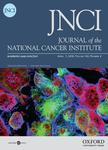版权所有:内蒙古大学图书馆 技术提供:维普资讯• 智图
内蒙古自治区呼和浩特市赛罕区大学西街235号 邮编: 010021

作者机构:Center for Systems and Computational Biology United States Division of Medical Oncology 195 Little Albany Street New Brunswick 08903 NJ United States Phase i and Developmental Therapeutics Program United States Division of Translational Pathology United States Office of Human Research Services United States Pharmacy United States Division of Gynecologic Oncology United States Division of Surgical Oncology United States Division of Basic Science Rutgers Cancer Institute of New Jersey Rutgers University New Brunswick NJ United States Department of Physics and Astronomy United States Department of Molecular Biology and Biochemistry Rutgers University Piscataway NJ United States Department of Medicine United States Department of Pathology and Laboratory Medicine United States Department of Radiology United States Department of Obstetrics Gynecology and Reproductive Sciences United States Department of Surgery Rutgers Robert Wood Johnson Medical School Rutgers University New Brunswick NJ United States Foundation Medicine Inc. Cambridge MA United States Department of Pathology and Laboratory Medicine Albany Medical Center Albany NY United States
出 版 物:《Journal of the National Cancer Institute》 (J. Natl. Cancer Inst.)
年 卷 期:2018年第110卷第3期
页 面:316-320页
学科分类:1002[医学-临床医学] 100214[医学-肿瘤学] 10[医学]
基 金:Rutgers Cancer Institute of New Jersey, CINJ, (P30CA072720) Rutgers Cancer Institute of New Jersey, CINJ
主 题:antibodies avelumab cancer cd80 antigens cell cycle checkpoint cytotoxic t-lymphocyte antigen 4 gastric cancer genes genome herpesvirus 4 histology human ligands lymphocytes mutation neoplasms programmed cell death 1 ligand 1 rna tumor-infiltrating
摘 要:Response to immune checkpoint therapy can be associated with a high mutation burden, but other mechanisms are also likely to be important. We identified a patient with metastatic gastric cancer with meaningful clinical benefit from treatment with the anti-programmed death-ligand 1 (PD-L1) antibody avelumab. This tumor showed no evidence of high mutation burden or mismatch repair defect but was strongly positive for presence of Epstein-Barr virus (EBV) encoded RNA. Analysis of The Cancer Genome Atlas gastric cancer data (25 EBV+, 80 microsatellite-instable [MSI], 310 microsatellite-stable [MSS]) showed that EBV-positive tumors were MSS. Two-sided Wilcoxon rank-sumtests showed that: 1) EBV-positive tumors had low mutation burden (median = 2.07 vs 3.13 in log10 scale, P 10-12) but stronger evidence of immune infiltration (median ImmuneScore 2212 vs 1295, P 10-4;log2 fold-change of CD8A = 1.85, P 10-6) compared with MSI tumors, and 2) EBV-positive tumors had higher expression of immune checkpoint pathway (PD-1, CTLA-4 pathway) genes in RNA-seq data (log2 foldchanges: PD-1 = 1.85, PD-L1 = 1.93, PD-L2 = 1.50, CTLA-4 = 1.31, CD80 = 0.89, CD86 = 1.31, P 10-4 each), and higher lymphocytic infiltration by histology (median tumor-infiltrating lymphocyte score = 3 vs 2, P .001) compared with MSS tumors. These data suggest that EBV-positive low-mutation burden gastric cancers are a subset of MSS gastric cancers that may respond to immune checkpoint therapy. © The Author 2017. Published by Oxford University Press. All rights reserved. For permissions, please e-mail: ***@***.